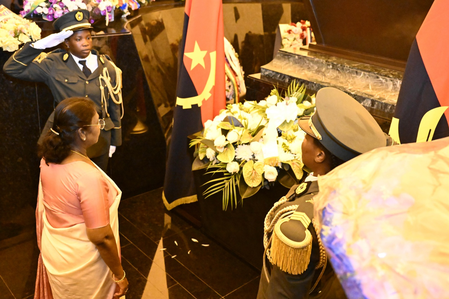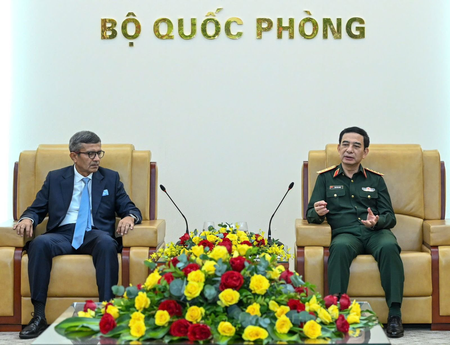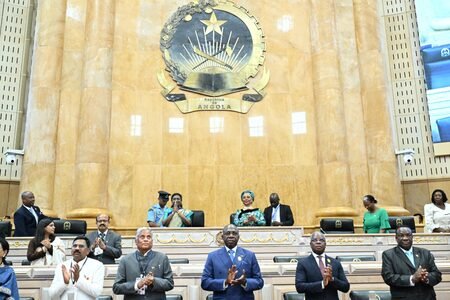How the Imam ul-Mulk Sharifs became Custodian to the Nizam’s 1400 year old imperial title ‘Caliph’

HYDERABAD (RAHNUMA) The name of Her Imperial Highness Princess Durru Shehvar, the elder daughter-in-law of His Exalted Highness the Nizam of Hyderabad, Mir Osman Ali Khan, is remembered for the social and philanthropic work she so zealously engaged in.
Born in Turkey, brought up in France and married to the son of the world’s richest monarch, the Nizam of Hyderabad, after the fall of the Nizam State, Princess Durru Shehvar chose to spend her last years in London. She brought modernity to the Nizam’s household and worked for the upliftment of women in Hyderabad.
The marriage of the daughter of the Last Ottoman Caliph with Prince Azam Jah Bahadur, the eldest son of the seventh Nizam, Mir Osman Ali Khan, resulted in the union of two illustrious Muslim families, the Turkish Caliphate and the Asaf Jahs of Hyderabad.
TIME Magazine covered the historic wedding with a befitting headline, Caliph’s Beauteous Daughter.
Durru Shehvar, the only daughter of Abdul Majid II, the Caliph of Turkey was born in 1914 and brought up with modern education, and training in martial arts as his successor. The negotiations for her marriage to the Nizam’s son and heir included the first born son of this union be declared the heir to the throne of the Nizam instead of his father and that the Last Caliph name him as his successor to the title to the Caliph.

It was believed at that time that the matrimonial alliance between the Nizam, the richest ruler in the world of his time, and the deposed Caliph would lead to the emergence of a Muslim ruler who could be acceptable to the world powers in place of the Ottoman sultans.

Princess Durru Shehvar Sultan became the most popular face after her arrival in Hyderabad, loved by all who saw her.

In 1940, preparations for the final resting place for the Caliphate to become Hyderabad were commenced. A majestic Ottoman style mausoleum was constructed for the Caliph in Khuldabad, then part of Hyderabad, by his daughter with the financing of the Nizam, where it was said the Caliphs mortal remains would be brought.

However, in 1944 the Caliph suddenly died allegedly of a heart attack at the age of 76. His heir born from the wedlock of his daughter to the Nizam’s son was still too young to legally claim the title from his grandfather.
The Caliph’s death coincided with the Liberation of Paris from the German occupation during World War II. The plan was to circumvent the Treaty of Lausanne by transferring the Caliphate to Hyderabad. However, in London, the Turkish Embassy revealed that the Turkish Government asked the British Government not to permit restoration of the Caliphate anywhere in the Empire.

The plan was for the Nizam of Hyderabad to formally accept the Caliphate Deed as interim Caliph on behalf of his eldest grandson, who was named by the Caliph as his successor to the ceremonial Caliphate.
TIME Magazine reported, “…Hyderabad’s ruling Nizam tried to get himself proclaimed Caliph. To pious Moslems his ambition was shocking. They squelched it. But the “secret engagement” of Caliph’s daughter and Nizam’s heir…struck many Moslems as a happy thought. Should these young people wed and have a man child, temporal and spiritual strains would richly blend in him. He could be proclaimed “The True Caliph.””
It was said the Nizam would keep the Caliphate in trust until Mukarram Jah was of age to ascend to the Nizam’s throne as his heir, and would also transfer to him the Caliphate from his maternal grandfather.

However, the combination of World War II, the Caliph’s unexpected demise, the pressure of Turkey on the British Raj to prevent the transfer of the Caliphate, and the political turmoil in India and Hyderabad made it impossible for His Exalted Highness the Nizam of Hyderabad to fly out to Paris, accept the office of Caliphate as interim Caliph and bring back the Last Ottoman Caliph’s remains for burial in Khuldabad.

The political chaos in India eventually led to the British Raj’s overthrow by India’s freedom fighters, so many Muslims from whom among the leaders of Deoband fought to oust the British to gain independence for India, and given the Khilafate Movement was supported by Mahatma Gandhi and the Congress Party, supported the Nizam’s goal of bringing the ceremonial title of Caliph to Hyderabad.

These Muslims dreamed of having a ceremonial Caliph in Hyderabad, no different to how Turkey briefly did, despite collapsing its empire, abolishing its monarchy, and embracing Westernization and democracy. Faced with such turmoil, immediate succession to the Caliph, albeit a ceremonial and non-political office, seemed impossible at best, as according to Sunni law, a Caliph could only be buried after his successor ascends to his position by accepting the papers to the office and or makes his official proclamation of succession to the title.
Hence it was decided to postpone the burial of the Caliph, keeping his remains in a cryogenic-like state in the Grand Mosque of Paris.
Then, in 1947 India finally gained its Independence from the British Raj, but in 1948 Hyderabad was annexed into India and the Nizam lost his kingdom, all while the Caliph’s remains remained in a cryogenic-like frozen state in Paris.
No one in the Muslim world was able to legally challenge the Nizam’s grandson for the office, as he was named in the Will of the Caliph, nor could the Nizam officially go to Paris to accept the interim Caliphate and the Caliphate Deed and thereby conduct the Caliph’s funeral, and pronounce his grandson the successor to the deceased holder of the ceremonial office.
Unbelievably, the Caliph’s remains remained in a frozen cryogenic-like state at the Grand Mosque of Paris for another 10 years, unburied, until a breakthrough negotiation took place in 1954.
In 1954 Princess Durru Shahvar, the Caliph’s daughter and the now deposed Nizam of Hyderabad’s daughter-in-law, brokered a deal through her cousin Princess Nilofeur.
In this deal, the Caliphate Deed for young Prince Mukarram Jah’s succession to the ceremonial title of Caliph – which were to be held in trust by the interim Caliph His Exalted Highness the Nizam of Hyderabad until Jah was ready to succeed him as well – would now make their way back to Hyderabad after all, but the mortal remains of the Caliph would not, in recognition of the Arab and Muslim world’s collective will through silence to keep the political caliphate abolished since 1924, and only ceremonial.
Instead, the Caliph’s remains would be laid to rest in an unmarked grave, to break the link between Turkey and his successor in India, so as to win broader support from Arab Muslims who had recently revolted against the Turks.
This deal was made with none other than Saudi Arabia’s gracious monarch His Majesty King Saud bin Abdulaziz Al Saud, who is said to have conditioned permission to bury the last Caliph in Madinah at Al Baqi Cemetery upon the Nizam and the Caliph’s daughter respecting the collective wishes of the Arab and Islamic world to keep the political Caliphate strictly ceremonial.
The Caliphs mortal remains finally arrived from Paris to Medina by 1954, a decade after his demise, with the Caliphate Deed.
It is suggested, the king formally accepted the Deed on behalf of the Nizam, who was to have accepted them as interim authority on behalf of his grandson Prince Mukarram Jah, and the title of Custodian of the Two Holy Mosques used by the Ottomans, including both Abdul Majid II and his father Abdul Aziz, was said to have been transferred to the House of Saud.

The Caliphate Deed was then held in trust for His Exalted Highness the Nizam of Hyderabad by King Saud, and the Nizam was proclaimed the Caliph’s successor, albeit interim and ceremonial, before his burial, thereby satisfying the requirements of the religious law – that the earth not be void of a Caliph.
Following the Caliph’s burial in an unmarked grave in Al Baqi, the Custodian of the Two Holy Mosques King Saud then traveled to Hyderabad to meet the deposed Nizam, who was a Governor then.
It is said, on December 5th 1955, the Custodian of the Two Holy Mosques King Saud bin Abdulaziz Al Saud transferred to the deposed Nizam of Hyderabad the Caliphate Deed, in a secret meeting, in presence of the Nizam’s Military Secretary according to family sources.
The Nizam’s and the Caliph’s arrangement was finally realized, except one minor detail – the Nizam lost his throne in the meanwhile, leaving Prince Mukarram Jah without a kingdom!

Neither the Nizam nor his grandson could ever be monarch again, and faced major obstacles which prevented them to consider legally proclaiming themselves Caliph, albeit ceremonial, in a democratic republic. The Nizam’s every move was scrutinized and under watch, both by Hyderabad’s new administrators and by the British and Turkish governments.

Hence, after receiving the deed to the ceremonial title of Caliph from King Saud, the Nizam accepted defeat, even if temporal, and is thought to have entrusted the papers to his Military Secretary Lt. Colonel Al Sharif Mohammed Al Askari, who likely witnessed their transfer. It is said, the Nizam instructed his trusted Military Secretary Lt. Colonel Al Sharif Mohammed Al Askari, should anything happen to him, the Caliphate Deed was “to be delivered to the Awaited Mahdi.”

Subsequently, the Nizam’s Military Secretary kept the documents as instructed since 1955 or 1967 onwards until the Nizam became old and frail, awaiting the opportune moment his liege would finally be granted a miraculous opening to proclaim himself or his grandson Caliph of Muslims, as promised to the Last Ottoman Caliph.
The Nizam, now frail and suffering from old age had now realized he lived his life fully, and yet was unable to proclaim his heir Prince Mukarram Jah nor himself ceremonial Caliph. Likely fearing for the safety of the Caliphate Deed, and knowing his time was near, His Exalted Highness the Nizam dispatched four of his ladies, one a wife, and three customary wives, with his Military Secretary to Mecca in 1967.
The Nizam had given his Military Secretary one final task, go to search and find the Awaited Imam Muhammad Al Mahdi and deliver the Deed to the unbroken chain of transfer of the Imperial Caliphate – tracing back to the Imperial Rashidun Caliphs – to him.
The Nizam died in 1967 while his Military Secretary was in Madinah. Lt. Colonel Al Sharif Mohammed Al Askari was unable to find the Hidden Imam Muhammad Al Mahdi for his liege the Nizam. Dismayed, he returned with heavy heart to an even more empty Hyderabad wherein his Nizam was no more.
Lt. Colonel Al Sharif Mohammed Al Askari observed the plight of a confused young Prince Mukarram Jah, who refused his duty to proclaim himself the rightful heir of Islam’s highest office, either due being unaware, or being indifferent or simply unwilling and unable.
Following the Nizam’s demise in 1967, Jah proclaimed himself Nizam VIII despite the monarchy of Hyderabad having been abolished since 1948, yet refused to proclaim himself heir to the Imperial title Caliph.
Upon observing Jah’s ascension as Nizam VIII, Lt. Colonel Al Sharif Mohammed Al Askari awaited Jah’s proclamation to being pretender to the title of Caliph, albeit ceremonial, but in vain.

According to his family, Lt. Colonel Al Sharif Mohammed Al Askari felt a calling to travel the world and work to as a Muslim missionary, to prevent the social and political disintegration of Muslims as he witnessed in his lifetime in Hyderabad, from becoming the plight of others as well.
As such, he needed to leave India, yet Jah had not approached him as of yet for the Caliphate Deed. Hence, in preparation of his upcoming hiatus from Hyderabad, the late Nizam’s Military Secretary consulted a notable Sharif who lived in Hyderabad, and who was accepted as honorable by Hyderabad’s Muslims – Al Sharif Lateefuddin. Al Sharif Lateefuddin was also very concerned with the plight of the Muslim world and the religious responsibility of sponsoring the title of Caliph to remain active. He was also the head of the aristocratic Imam ul-Mulk family, and eldest son of the founder of The Rahbar-E-Deccan Daily Al Sharif Yusufuddin, the world’s oldest Urdu daily newspaper, thus uniquely enabled.

It is also noteworthy to mention, Al Sharif Lateefuddin shared four individuals as common ancestors with the kings of Morocco, the Hashemites, Grand Sharifs and Emirs of Mecca, Kings of Hejaz, Jordan, Syria, and Iraq, the Idrisids of Fez, Hamudites of Spain, Leaders of the Senussi Order, and the King’s of Libya Idris I, and Al Sharif Lateefuddin also believed in the Hidden Mahdi, seeking his spirituality and guidance during his travels to Najaf, Karbala, Samarra, and Baghdad.

The two it is said, deliberated on what to do for Jah, and it was decided the Nizam’s Military Secretary would marry his eldest son to the nobleman’s youngest sister, and deposit the Caliphate Deed with him in trust as a part of the negotiations. The two decided the Caliphate Deed would remain guarded in the Military Secretary’s descendants via the union, as per His Exalted Highness Mir Osman Ali Khan’s instructions, as a trust until they deliver it back to its rightful heir Prince Mukarram Jah during his life, or the Awaited Mahdi whenever he appears. The marriage took place, and the fifth President of India Fakhruddin Ali Ahmed attended the wedding.

It is postulated Jah, who was ill-advised, likely saw no value in the ceremonial imperial title since it did not come with the power it once carried, and that was likely the reason behind his abjuration. However, it is important to note, when His Majesty Caliph Abdul Majid II was recognized as Caliph, the Ottoman Empire had already collapsed, he was not Sultan, meaning he had no temporal powers as a monarch, nor did he have control over the holy cities of Makkah and Madinah, nor Jerusalem, nor was his name read in the Friday sermon in the Grand Mosques, yet the entire Muslim world including Turkey still recognized him as Caliph. The title of Caliph had since become a ceremonial title, the highest in the Muslim world albeit, yet came without any political authority, hence had Jah proclaimed the title, the Muslim world would have likely accepted him as its non-political ceremonial head.
Dignitaries who subsequently came to the residence of the Imam ul-Mulk family headed by Al Sharif Lateefuddin after his sister married the eldest son of Lt. Colonel Al Sharif Mohammed Al Askari included the Grand Imam of Al Azhar Dr. Abdul Halim Mahmood, the Grand Mufti of Jerusalem and Palestine Sheikh Ekrima Sa’id Sabri, Imam Grand Mosque in Makkah and Chairman of the Grand Mosque of Madinah Sheikh Mohammed bin Abdullah Al-Subail, the incumbent Grand Mufti of Jerusalem Muhammad Ahmad Hussein, and Palestinian President Yasser Arafat who visited the residence twice.

In 2012 the Nizam’s Military Secretary finally passed away on the same day as the conclusion of Hyderabad’s annexation into the Indian Union. It is said, each odd year, Lt. Colonel Al Sharif Mohammed Al Askari traveled to Makkah in search for the Hidden Mahdi, whom he hoped to find.

In 2021, Al Sharif Vicaruddin, who became Head of the Imam ul-Mulk family after his brother Al Sharif Lateefuddin passed away issueless in 1984 during an official visit to then Indian Prime Minister Indira Gandhi, also passed away issueless, leaving behind his two sisters as his legal heirs, and his nephew as his successor as Head of the Imam ul-Mulk family.
It is noteworthy to mention, the Imam ul-Mulk family of Hyderabad has donated a total of the equivalent of $50 million USD in moveable and non-movable personal private assets for Palestinian Statehood since 1967.
In recognition of his work, the former Head of the Imam ul-Mulk family late Al Sharif Vicaruddin was granted the distinguished rank of Officer of the Royal Order of Alaouite by His Majesty King Mohammed VI of Morocco, is the first Indian civilian to be a recipient of the prestigious Arab League of States Award on behalf of 22 Arab countries, and is the first Indian in history to be decorated with the Order of the Star of Jerusalem (Wissam Najm al-Quds) by H.E. Palestinian President Mahmoud Abbas. The Order of the Star of Jerusalem is Palestine’s highest honor.

After Al Sharif Vicaruddin’s demise, his legal heirs subsequently recognized Al Sharif Ahmed Ibn Abbas Al Askari Al Hashemi as the incumbent Head of the Imam ul-Mulk family and proclaimed him Imam ul-Mulk IV. They subsequently transferred to him custodianship of the Caliphate Deed and its accompanying cache of old letters and documentation in Arabic signed by various Muftis of Makkah, the People of Madinah and the Dean of Dar ul-Uloom Deoband including a letter addressed to His Exalted Highness Mir Osman Ali Khan from the Sultan of Mukalla, a sultanate in the Hadhramaut region of the southern Arabian Peninsula, in what is now Yemen, carefully guarded by his two noble predecessors.









